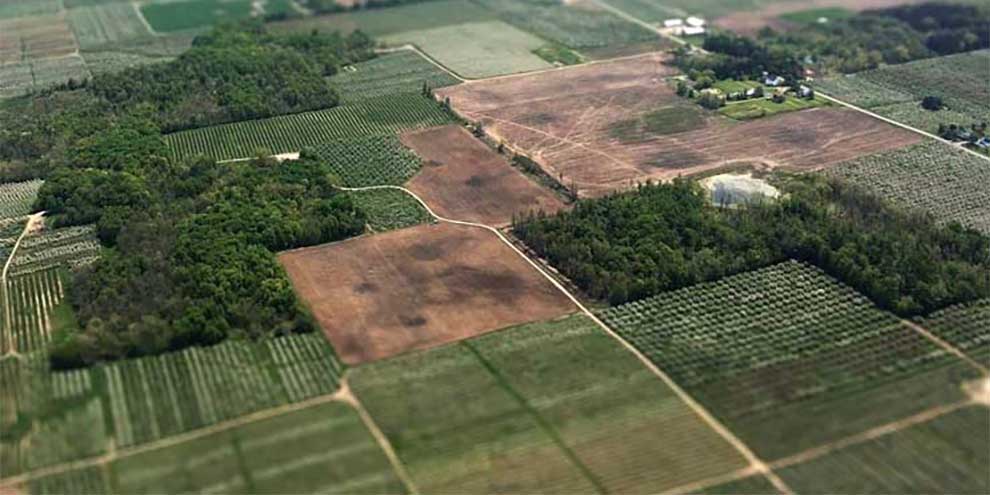Trampus Corder, Certified Crop Advisor and Broker/Owner of Corder and Associates, LLC
Whether you are perusing the local listings of lots and land for sale or navigating a realtor’s website, you will find that the listings all include the size of the plot or farm defined in acres. This number could potentially be confusing for you especially if you have little or no background in farming or ranching.
Ask any farmer how much he has left to harvest, and he will tell you in a number of acres. Technically, an acre can be defined as an area one furlong by one chain or 660 feet by 66 feet. An acre can be any shape so long as it is exactly 43,560. The acre is a standard measurement utilized in the United States and the United Kingdom.
Okay, so what do we do with that? Other than what one of us is able to plow with a yoke of oxen pulling a wooden plow in one day, what does an acre really represent? It can be sometimes difficult to imagine what an acre looks though with that information. So, to help you visualize what an acre looks like, I have compiled a list of popular places and their corresponding acreage.
- An acre is smaller than a football field; An NFL football field is roughly 1.3 acres
- A standard Polo field is just over 12 acres
- Alcatraz Island in the San Francisco Bay is 22 acres
- The United States Capital spans 57 acres
- Vatican City, the world’s smallest nation, comprised of 110 acres
- Disneyland in California sits on about 160 acres
- The United States has nearly 2.5 billion acres of land
Now that you know approximately the sizes of various acreages, it becomes easier to decide how much land you need depending on what you want to do with the land. There are various reasons people venture out looking for land. Some potential land buyers simply want more space and to get away from the bustle of the city, but they are not necessarily looking to add “farmer” to their resumes.
Still, some people are entertaining the idea of starting a small, working farm, and others are wanting a piece of ground to hunt on. City ordinances often times prevent people from owning any small livestock and such so some people wish to have some rural ground to add some farm animals to harvest the natural, home grown goods they produce such as eggs or keeping bees to collect honey. Half an acre will give you enough space for such a project.
Let’s talk numbers! Farm to table farms or hobby gardens are becoming more popular, and the size of plot you need will depend on the number of people you are supporting. If you need a parcel of land for your cows or horses, it is recommended that you allow at least 15 acres of grazing per animal. Chickens need less room so a quarter of an acre will support a couple dozen of chickens. Goats are grazing machines so an acre per goat is advised.
Farming fruits and vegetables depends upon the type of plant and produce. An orchard of apple trees, for example, needs more land then ground fruits and vegetables per say. Cows are a big investment, and if you are raising them for beef, you will want 12-16 acres to allow for free grazing each year. To raise 50 cows then, roughly 750 acres of land will be needed. As you can see, the amount of acreage needed is very much contingent upon how much you want to harvest, how many people you are wanting to support, and the goals you want to achieve. It is all relative.
Just as individuals farm for a variety of reasons, they also hunt for various reasons. Being outdoors and close to nature is an incredible feeling, while others wish to use the meat for their family for the rest of the year. Still others want to track down that trophy buck. Whatever the reason, the more land you obtain, the bigger the animals you attract and the better the chances you give yourself.
In addition, terrain plays an important role when considering vacant land. For instance, a river or some kind of water source on the piece of acreage immensely increases the likelihood of wildlife wandering about. Are you a bow hunter or a rifle hunter? Hunting with a rifle means you will need 40-60 acres at the very least. Ten acres can sustain bow or bird hunting. Keep in mind, if you want larger hunting groups, you will want to look at more acreage.
Now that you have a grasp on how much land you’ll need for what, it is time for you to start shopping! Fortunately, Montana and Wyoming has rolling plains and plenty of forests and vacant spots for sale. At Corder and Associates, we specialize in assisting buyers with outlining their aspirations and locating rural properties to suit those needs. Familiarize yourself with what is out there by visiting our websites at www.corderland.com or www.LandLeader.com. As always, please feel free to contact us directly.




